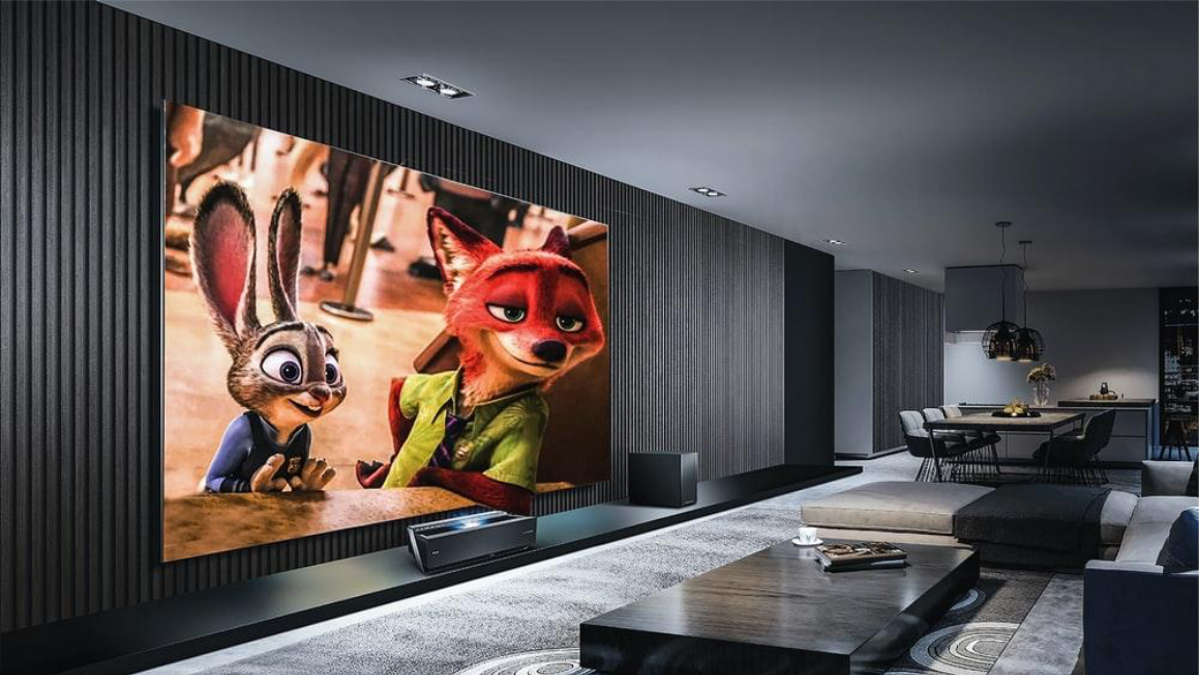
There are so many options when it comes to selecting a new display to watch your favorite shows, work on your computer, or have on as framed art in the background of your living room. Before putting down a lot of money on something that might not be the right fit for your situation, why not learn a little more about the technology supporting all these new devices.
Table of Contents
What are Mini-LED and OLED?
LED stands for light-emitting diode. It is the current leader in energy-efficient lighting technology for use in commercial and business purposes. It is widely used domestically in everything from the screen on your phone to the light bulbs illuminating your bedroom closet.
Mini-LED technology is similar to traditional backlit LCD except that it uses thousands of tiny LED backlights for local dimming characters instead of a single large light. Mini-LED diodes usually measure 0.2mm across or smaller. Fitting more diodes behind the pixels allows for better contrast control and precise imagery with less backlight bleed.
OLED is a bit different. OLED stands for organic light-emitting diode and refers to the panel often used inside a display screen for televisions. It is currently the industry leader for most domestic TV products outperforming CRT, LED, LCD, and QLED made models. OLED operates using less energy than the others and has incredibly fast response times that make it the preference of gamers and movie buffs.
What are the Features of Mini-LED and OLED Technology?
The mini-LED screen display is so popular that even Apple uses it in their new line of 2021 products. Simply put, a traditional LCD computer screen would use hundreds of LEDs, but a mini-LED display would have thousands of diodes.
With Mini-LED, you get:
- A sharp contrast level with deep blacks
- Higher brightness settings
- Increase power efficiency
- Far less prone to burning out compared to OLED
- Uses inorganic Gallium nitride that doesn’t degrade as quickly as OLED
That isn’t to say these are the winners in the Mini-LED vs. OLED display game. On the contrary, OLED still has many benefits that make it a worthy opponent. For starters, it is less expensive to manufacture than Mini-LED screen displays, at least for the moment.
Some of the features of OLED include:
- Saturated and vivid color display
- High contrast ratio with deep blacks
- Capable of a wide viewing angle up to 180 degrees
- Low power consumption using organic materials
- Can be built with extremely thin and flexible displays
Comparing the Two Screen Display Technologies
OLED’s primary advantage over Mini-LED technology is its per-pixel lighting. All of OLED’s pixels are self-emissive, meaning each has its own light source, offering complete control over brightness and contrast.
However, OLED cannot match the brightness factor of a Mini-LED screen display. Marketers lean into the blackness capabilities of OLED overlooking the fact that Mini-LEDs can sustain almost 4X the nits units of brightness across the entire panel. That is a huge difference a clean reason why they win in the brightness factor of Mini-LED vs. OLED.
When you’re considering viewing angles, there is no competition. OLED is the clear winner with a wider angle and a more flexible design. Mini-LED has to remain at the same axis as other traditional TVs using the current technology.
Response rate and color accuracy are pretty equal between the two technologies. They both allow you to get vivid experiences. The only other factor that really matters is reliability. Mini-LED doesn’t use organic material like OLED, so it has a longer life expectancy.
Which Should You Choose?
With the new 8th generation of OLED displays hitting the market this 2021 holiday season, you won’t see much of a price difference between those and Mini-LED. There may be only a 5-10% discount depending on make, size, and model.
The real differentiating factor will be comfort and application. OLED allows for a more immersive viewing angle which is perfect for larger living rooms when sitting in different positions. The only problem is OLED won’t last you as long as Mini-LED and cannot offer as much of a wide array of applications, especially after Apple’s announcement. That is why we would suggest investing in a Mini-LED screen display. It will last you longer and be used in more technology in the upcoming years.
Applications and Uses of Mini-LED Technology
In the race between Mini-LED vs. OLED, Apple makes the winner. When one of the foremost tech industry leaders selects your design as the foundation for their new screens, you know you have a winning product.
Mini-LEDs will not take long time to take over the cinema and Zoom meeting spaces after everyone gets used to their brightness factor through their Apple mobile and laptop devices. Unfortunately, OLED just cannot keep up with that brightness factor without risking more burnout issues.
Conclusion
While OLED technology does offer an excellent viewing experience, the future is in Mini-LED technology. If you are crafting a new product to compete in the same space as Apple or breaking into new markets with similar Mini-LED and LED-based products, you need a reliable and trustworthy manufacturer.
That is where a company like Refond LED Chip Manufacturer can help. They offer high-quality chip production and customer service with clients all over the world. Their LED lighting catalog offers a wide variety of solutions from indoor lighting to automotive sensing to outdoor LED display. Learn more about their years of experience and quality standards by visiting their website. They are perfectly positioned to seize the Mini-LED technology market by storm in the upcoming years.